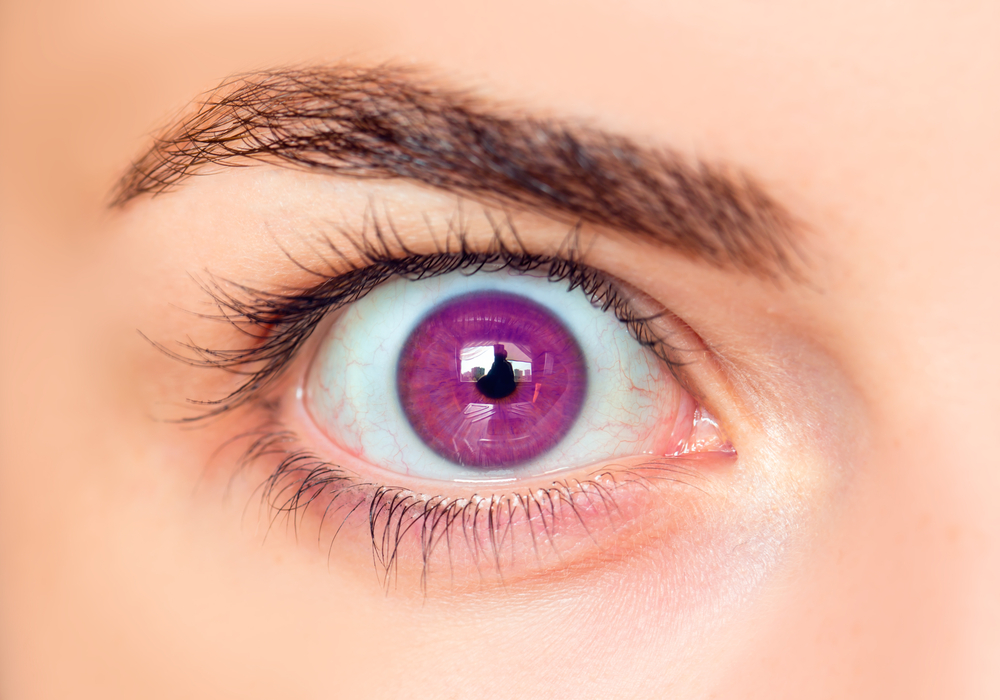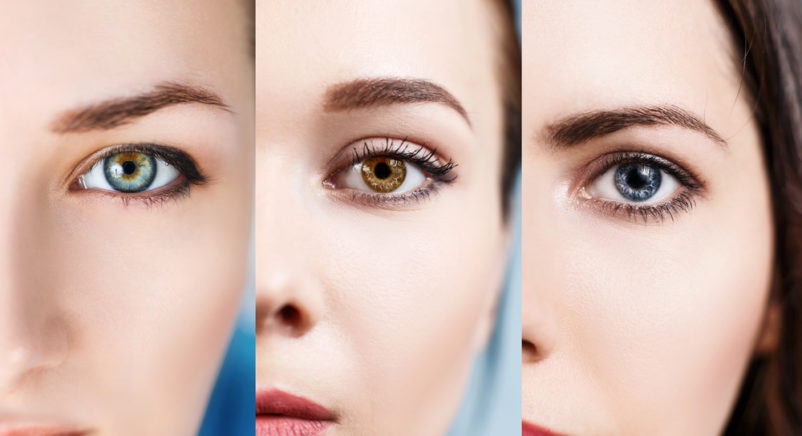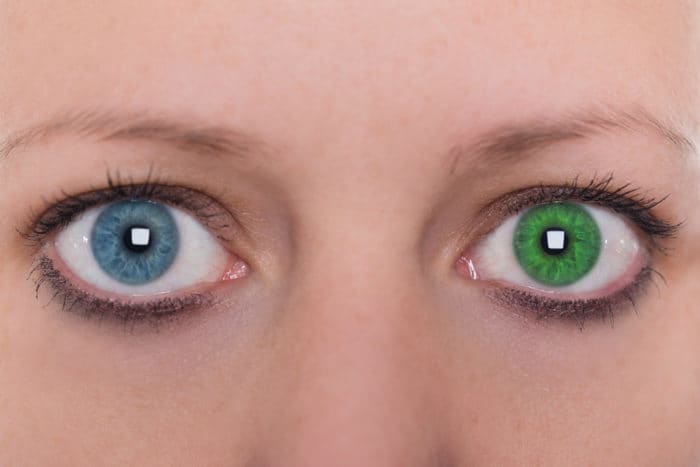Contents:
- Medical Video: 7 Things That Can Change Your Eye Color
- Does anyone really have purple eye color?
- Eye color changes at birth
- Conditions that affect eye color
- Heterochromia
- Fuchs syndrome Uveitis
- Horner's syndrome
- Glaucoma pigmentary
- Iris tumor
Medical Video: 7 Things That Can Change Your Eye Color
The color of the human eye varies, some are black, brown, hazel or green. However, have you ever seen people have purple eyes? Can someone naturally have purple eye color? See the facts here.
Does anyone really have purple eye color?
Apparently this is just a myth that circulates through cyberspace. The color of the eye turns purple is referred to as Alexandria's Genesis. This condition is a myth about perfect humans who have purple eyes since a baby. This myth about rare genetic mutations has been circulating on the internet since 2005.
The Alexandria myth has some strange and unclear origin stories. This myth claims people with this condition are born with purple eyes or the color of the eye turns purple shortly after birth.
In addition, people with this condition also have pale skin and a proportional body that does not experience weight gain, and has a good immune system.
These perfect humans are said to live to be more than 100 years old and produce very little residual body waste.
Alexandria's Genesis is not a real medical condition. However, there are some real-life conditions that can affect eye color.
Eye color changes at birth
The color of the human eye is determined by the part of the eye called iris, which is a colorful circle around the pupil that controls how much light enters the eye.
The iris color change occurs because of a protein called melanin, which is also present in the hair and skin. Cells called melanocytes produce melanin when the eye is exposed to light.
Melanocytes in the eyes of newborns have never been exposed to light, so they are not fully active. Melanocytes become more active during the first year of birth.
Most newborns have brown eyes, regardless of race. But many Caucasian babies are born with blue or gray eyes. Because melanocytes are active due to exposure to light during the first year of a baby's life, eye color can change. So the baby's eyes can change from blue or gray (low melanin) to hazel or green (medium melanin), or brown (high melanin).
Usually, eye discoloration will stop at the age of 6 years, although some people experience it throughout adolescence and adulthood. Research shows that this phenomenon affects 10–15 percent of Caucasian people.
Conditions that affect eye color
Although regulated by genes, there are several conditions that can make eye color change.
Heterochromia
People with heterochromia have different iris colors. For example, you might have one blue eye and one brown eye.
Another form of this condition, called segmental heterokromia, causes the same color variation in the iris. For example, half of your left eye can be blue and half can be brown.
Most heterochromia is not caused by a particular health problem, but is a result of genetic factors. Heterochromia rarely can be a sign of a congenital condition or due to injury or illness.
In rare cases, it may be related to other conditions, such as Horner's syndrome, Parry-Romberg syndrome, Sturge-Weber syndrome, or Waardenburg syndrome.
Fuchs syndrome Uveitis
This condition is also known as Fuchs 'heterochromic uveitis (FHU) or Fuchs' heterochromic iridocyclitis. Fuchs syndrome uveitis is a rare condition characterized by long-term inflammation of the iris and other parts of the eye.
FHU causes eye discoloration. The color of the iris usually becomes brighter, although it may be dark in some cases. According to the American Uveitis Society, FHU usually affects one eye, but 15 percent of people experience changes in both.
Other symptoms include decreased vision. FHU can increase the risk of other eye conditions, such as cataracts and glaucoma.
Horner's syndrome
Horner's syndrome, or Horner-Bernard's syndrome, a group of symptoms caused by a disruption of the nerve pathway that leads from the brain to the face and eyes on one side of the body.
Horner's syndrome is usually caused by other medical problems, such as a stroke, spinal cord injury, or tumor. Sometimes there is no underlying cause.
Symptoms of Horner's syndrome include a decrease in pupil size (the black part of the eye), a drooping eyelid, and a decrease in sweat on one side of the face.
The difference in pupil size between affected and unaffected eyes can give a different eye color appearance. Iris of the affected eye may also be lighter in color when the syndrome develops in infants under 1 year.
Glaucoma pigmentary
Glaucoma is a group of eye conditions caused by damage to the optic nerve. This damage is often associated with abnormal high pressure in the eye. Glaucoma can cause loss of vision if left untreated.
In pigmentary glaucoma, colorful pigments from the eye are held in small grains, causing blockages that slow fluid flow and increase pressure. This can cause abnormalities in the iris, although the color of the eye will not change completely.
The symptoms of pigmentation glaucoma are similar to other types of glaucoma. The main symptom is loss of vision on the edge of the eye, making it difficult for you to see from the side of your eyes.
Treatments involving drugs, lasers, or surgery can reduce pressure buildup, but it is difficult to prevent the release of pigments.
Iris tumor
The tumor can grow behind or inside the iris. Most iris tumors are cysts or pigmented growths (such as moles), but some are malignant melanomas (an aggressive and life-threatening form of cancer).
Tumors in the iris usually do not cause symptoms, but some people may experience eye discoloration. Thick pigment spots called nevi can change, grow larger, or pull pupils in different directions.
If you suspect a tumor in the eye, consult an eye cancer specialist to get rid of melanoma or start cancer treatment. Treatment may involve radiation or surgery.














